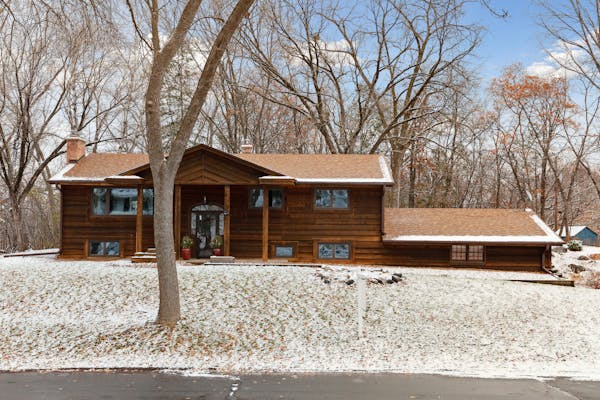Juliann Brunzell had one key must-have — or, technically, 88 keys — when trading in her south Minneapolis house for a condo: It would have to have room for her baby grand piano.
"It will go with me wherever I go," she said. "It represents who I am and my family."
Brunzell, who became one of the state's first female uniformed officers when she started in the mid-1970s, grew up with a love for music. Her grandfather and both parents were musicians.
When moving from her multi-story, single-family house, Brunzell also wanted a one-level unit where she could age in place.
"I was in a house for almost 30 years and raised my family there. I've had MS [multiple sclerosis] for almost 50 years," Brunzell said. "I was feeling pretty mobile, but it was getting harder to go up the stairs. I wanted to get ahead of it rather than behind it."
During her search, Brunzell zoomed in on a condo in Loring Green East. "I always knew I wanted to live by Loring Park," she said.
But because it was built more than four decades ago, in 1981, the unit she selected needed updates. Brunzell enlisted the help of Metropolis Design Group owner Laura Bischoff, the interior designer who remodeled her south Minneapolis house back in the day.
Bischoff said their second project together was the opposite of the first.
"She wanted [the condo] to have an alter ego to her 1920s house — a modern aesthetic, whereas she's always been pretty traditional," Bischoff said.
The designer added that it was an exciting time to tackle this particular project in this particular location.
"Loring Green East is one of the very first high-end high-rise condominiums built in Minneapolis in the early 1980s. It was cutting edge at the time and has always been known as an iconic building," said Bischoff, who noted that the building "seems to be having a bit of a resurgence."
Letting the light in
One of the first things Bischoff did was let more natural light into the 1,600-square-foot condo, which had two bedrooms and two baths, plus a three-season porch and sun deck.
"It was pretty crowded and pretty dated and really dark before," she said. "We wanted to lighten, brighten and make it simple."
By taking down a wall, Bischoff was able to bring natural light from the living room, with its wall-to-wall glass, into the study as well as expand gathering spaces. She also added a small interior window and door along another living room wall to bring natural light into the previously dark hall on the other side.
"We interrupted the hallway," Bischoff said. "Then we [gave those features] arched shapes because Julia used to travel quite a bit and her favorite city is Florence. So it was a reference to that, but in a modern way."
To give the living room additional form and function, floating shelves, custom built-ins and an electric fireplace were added.
"These buildings can come with drywall box rooms," Bischoff said. "The fireplace makes an architectural statement, grounds this place and gives it a really outstanding warm feature."
Cents and sensibility
In the kitchen, installing textured rift white oak cabinets was a game changer when it came to brightening and modernizing the space. As was swapping out fixtures, a favorite design go-to of Bischoff's.
"Lighting is always an area where I think we can have a little fun," she said. "You can give everything a really nice upgrade and a current pop, but you can change it down the road."
Meanwhile, Bischoff was careful to keep the original Calacatta tile in the kitchen and entryway. After all, it was a classic, natural material that could be preserved with just a touch-up.
"There's that sensibility part. If there's a way to save things, there wasn't a reason to go through all of that additional demo," Bischoff said. "That was a good bone, so we kept it and also saved money."
Personal touches
Today, Brunzell, 72, is enjoying her newly renovated condo because it works so well for how she lives today.
Though retired, she spends a lot of time in her home office. She's chair of the International Association of Women Police board of trustees (for which she received the organization's prestigious 2015 Heritage Award).
When Brunzell joined the University of Minnesota police department in 1974, she became the second sworn female uniformed patrol officer in the state.
"Back then, women being hired had to have a four-year degree and men didn't," she recalled. "Part of my uniform was a big clip-on tie and a men's pocket blue shirt. I was asked if I wanted to wear a skirt instead of pants and I said, 'I don't think so.' "
She served 15 years at the university, first as a patrol officer before becoming a detective. Then Brunzell became a special agent for the Bureau of Criminal Apprehension, where she worked for 17 years before retiring in 2006.
"I have loved the work," she said. "I have loved working with the community."
But Brunzell realizes there's more work to be done to increase the number of underrepresented groups in law enforcement. It's her goal, through the association of women police, to increase the number of women in blue.
Of course, Brunzell always makes time to play that baby grand piano, which is displayed prominently in her living room.
From where she lives, she can see the former headquarters of the MacPhail School of Music (now MacPhail Center for Music, located in the Mill District). That's where her parents met. Her mother, Jean, was a concert pianist. Her father, violinist Cliff, led the famous Golden Strings orchestra that had a 19-year run performing in the Flame Room at the downtown Radisson Hotel.
She has her own memories of MacPhail, as well.
"I can see from the window where my sister and I took a gazillion years of piano lessons," Brunzell said.
These days, she's passing on her family's appreciation for music.
"Every time my grandkids come over, they want to play the piano," she said.

Helen Simonson is in Jane Austen mode with 'The Hazelbourne Ladies Motorcycle and Flying Club'

Frank Stella, towering artist and master of reinvention, dies at 87
Angel Reese, Cardoso debuts watched widely on fan's livestream after WNBA is unable to broadcast




